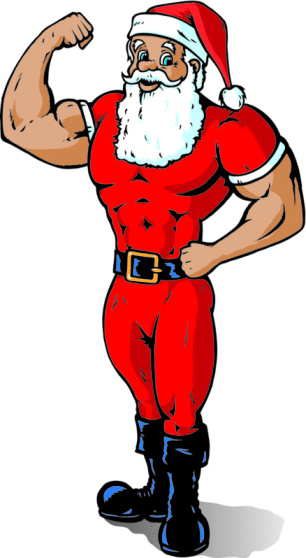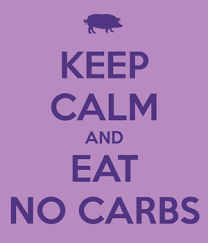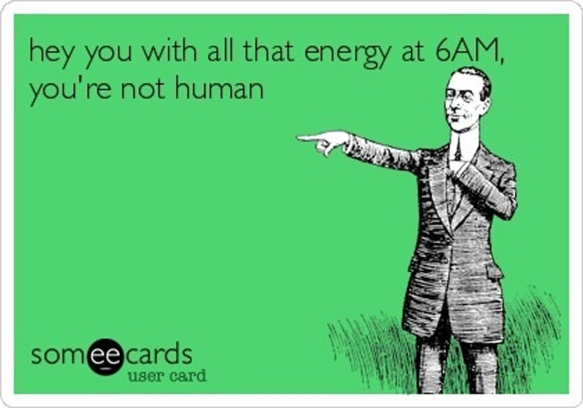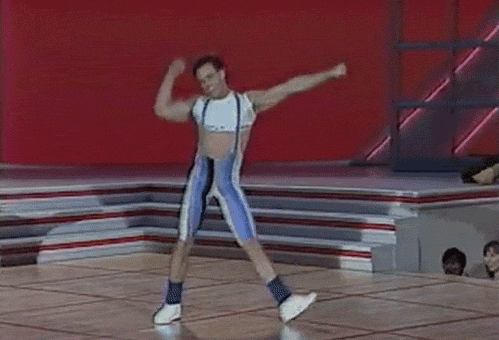A lot of my clients like to work out with me twice per week with a day in between – Monday/Wednesday, for example, or Tuesday/Thursday. And almost invariably, that second session gets one of two responses:
- cancellation.
- complaints about soreness (“…but it wasn’t this bad yesterday!”)
This condition, friends, is called Delayed Onset Muscle Soreness (DOMS), and it’s a super common thing. DOMS kicks in 24-72 (most commonly: 48) hours after the exercise or activity that causes it, and comes from the microtears in muscle tissue that occur with intense (read: challenging) training. The more pronounced the eccentric contraction that caused the tear, the more intense the feeling of soreness will be two days later. Behold:
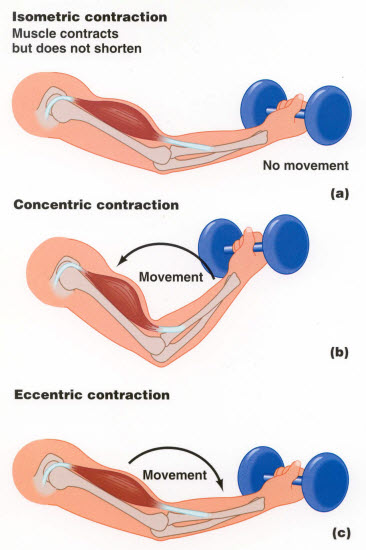
Movements like the biceps curl, above, tend to produce more prominent DOMS because the eccentric (“down”) phase is so stressful for the muscle being worked. The same is true for squats, deadlifts, and push-ups, which is why these movements tend to produce DOMS at a higher rate.

Whether or not you develop DOMS is not a sign of how “good” or “hard” your workout is, however – typically it is a function of doing something new or different to your body rather than something more difficult. For example, one of my worst cases of DOMS in recent memory was after hitting the driving range with my Dad for the first time – I wasn’t used to gripping a golf club, so I was hyper-focusing, and all that grip meant my forearms felt like I’d been bouldering the Grand Canyon for a few hours – and lasted a few days.
Soreness is not a bad thing, nor a good thing – in my professional opinion, it’s just a fact of environment, kind of like how you get sweaty when it’s hot outside or shiver when it’s cold. You get sore when you challenge your body to perform new, heavier, unfamiliar, or explosive movements. You experience soreness when you are growing your muscles (i.e. hypertrophy), and you get it when you’re training for endurance events, and you may even get it from something seemingly innocuous – like jumping on a trampoline, or carrying luggage up a staircase.
The big divide I see with my clients that do experience DOMS is what they do about it – meaning, do they cancel the next session? Push through? Figure out a way to avoid it next time? If you are someone who suffers from that “hit by a truck” feeling after each and every workout, here are some (non-foolproof, but worthy) strategies to try:
- Tart cherry juice. Yep, just sippin’ on this sour swill has been linked to decreased post-workout inflammation.
- Ice and cold. Whether it’s a refreshing shower, a bag of ice on overworked areas, or if you’re a real boss, a stroll through the cryo chamber, getting your bod chilled out in a hurry can stop the development of DOMS by slowing down inflammatory processes.
- Sports massage. Forget the image of lying comfortably in a lavender-scented zen spa – sports massage is brutal, painful, and not for the faint of heart – but it’s one of the “luxuries” that keep professional athletes mobile, so you know it works. If you are a continuous DOMS sufferer, I suggest trying to get a session once every week.
- Compress yourself. I’ve seen shin splints and calf cramps all but disappear from clients who just start wearing compression socks or sleeves – and similar reports from those who wear recovery compression leggings or tops. It’s a small change that can prevent a large dose of soreness – worth the somewhat ample investment.
- Not being a wuss. Yep, tough love – there is a major difference between being sore and being injured, and if you’re honest with yourself, you know when you’re just trying to get out of a workout. Active recovery (walking, swimming, yoga) is actually a better strategy than lying in your bed complaining, and it’ll get you more results, too.

One final point – though I’ve sort of made it above, but it bears repeating – soreness is not a good or bad thing, inherently. It doesn’t mean your workout was successful or unsuccessful; it doesn’t mean you’re out of shape or in shape; it doesn’t signify much except that you used your body in a way (or to a level) it hasn’t been used before, and it’s giving you a signal that it noticed. So buck up, stretch out, slap on an ice pack, and keep moving – if you let the DOMS get you down, you’ll never be able to move forward in your fitness gains.
What’s your best remedy for soreness – DOMS, immediate, or otherwise?

